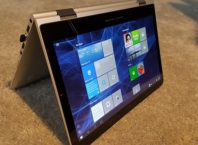Are you thinking of installing a home media server?
Installing a home media server is a great way to DIY a home entertainment server. While paid streaming services offer a library of online media, you can host files on your own.
You can access your content from anywhere once you sync it to a media server. A media server is a great way to share access to your movies, music, and TV shows.
Want to install a home media server? In this article, we show you how to install your very own home theater. Read on to find out more about building a home media server.
Contents
What Is a Home Media Server?
In technical terms, a home media server is a central location for all your media. With a home media server, you can allow other users to access your content. A home media server has three main components, including:
- Server – A smart device to deliver media files
- Storage device – Stores all your media files like photos, computer files, and videos
- Clients – Devices that other people can use to access your media (TV, personal computer, or mobile phone)
Your three components must be compatible with each other. Generally, these components connect through a local area network. However, you may also use wireless methods.
Set Up With a NAS Enclosure or a Computer
When setting up your media server, you can choose to use a NAS enclosure or a personal computer. Here are the pros and cons of using both.
NAS Enclosure Media Server
NAS stands for network-attached storage. It is a media server with enclosed slots or ports for hard drives. A NAS Enclosure media server can distribute media and files throughout a network.
A NAS enclosure must be able to provide high-quality videos to one or more sources without buffer. This form of an enclosed media server is more prone to lag and buffer with a slow processor or little RAM. A NAS transcodes to deliver media across devices.
Transcoding takes a file then makes it compatible to view and play on other devices. A NAS has a built-in processor and RAM to acquire the needed amount of processing power. However, its RAM and processor are only for serving, transcoding, and handling media.
Pros of Using a NAS Enclosure Media Server
One of the main benefits of a NAS Enclosure media server is its dedicated purpose. A NAS Enclosures server only to manage files and media. It won’t get slowed down by typical computer processes like running web browsers.
A NAS server can provide you with various features. It may also come with built-in utilities and applications. With a GUI and operating server, it’s easy to configure a NAS server.
A NAS server offers a low profile system. The enclosure is often smaller than your standard server or desktop. If you ever need help with your NAS enclosure, you can contact the manufacturer.
Cons of Using a NAS Enclosure Media Server
If you’re making a home media server on a budget, a NAS Enclosure may not be for you. A NAS media server starts at $300. Repurposing a desktop computer may be cheaper than buying a NAS media server.
While NAS enclosures come with built-in features and software, you may feel limited. However, this could depend on the system that you use.
If you already have a dedicated computer or server, it can outperform a NAS enclosure. A dedicated computer may be the better option if you plan on having a few users. You may also have limited upgrade options.
Computer Media Server
If you prefer flexibility, a computer media server may be the best option for you. However, you may need to limit background tasks like web browsing. A computer serves a single storage location.
It must also allow you to transcode and distribute files when needed. Here are some of the pros and cons of using a computer as a NAS media server.
Pros of a Computer Media Server
A computer media server allows you to upgrade any component at any time. A NAS closure has limited upgrades due to its laptop motherboard. A desktop motherboard can provide you with more slots for upgrades.
A computer can also give you more processing power. You can always replace an old processor with a new one. If you’re using a repurposed computer, it can be cheaper than using a NAS enclosure.
You also have more options for choosing operating systems. You can find many NAS operating systems based on Linux.
Cons of a Computer Media Server
Using a computer as a NAS media server can be more difficult to configure than an enclosure. Understanding the hardware, software, and operating system can take up a lot of time.
It may also be hard to find a support channel if you need help in setting up your home media server. A desktop computer is also larger than a NAS enclosure.
If you only have a small entertainment center, a computer media server may not be the one for you. Upgrades like high-end PC components may cost you more.
Install the Hard Drives
You can install hard drives on a NAS enclosure with drive trays. To install a hard drive, mount the hard drive onto or into the tray.
For computers, remove the computer’s case cover. Attach the hard drive into an available drive bay.
Connect Media Server to Network
Always use a hardwire to connect your NAS to an Ethernet cable. A wireless signal may not be reliable enough for smooth running. Ensure that your router or modem can support transfer speeds of 1 GB per second.
Transfer or Install Apps and Files
A NAS enclosure will provide the necessary instructions for setting up a unit. A computer will require an operating system before you can install anything. After that, you can download from YouTube and enjoy any of your media content!
How to Set up a Home Media Server
Now you know how to set up a home media server! Follow our steps right here to get everything you need in one central hub!
Need more tips in creating a home entertainment system? Check out our other blog posts for more tutorials in configuring your home into a home theater!












